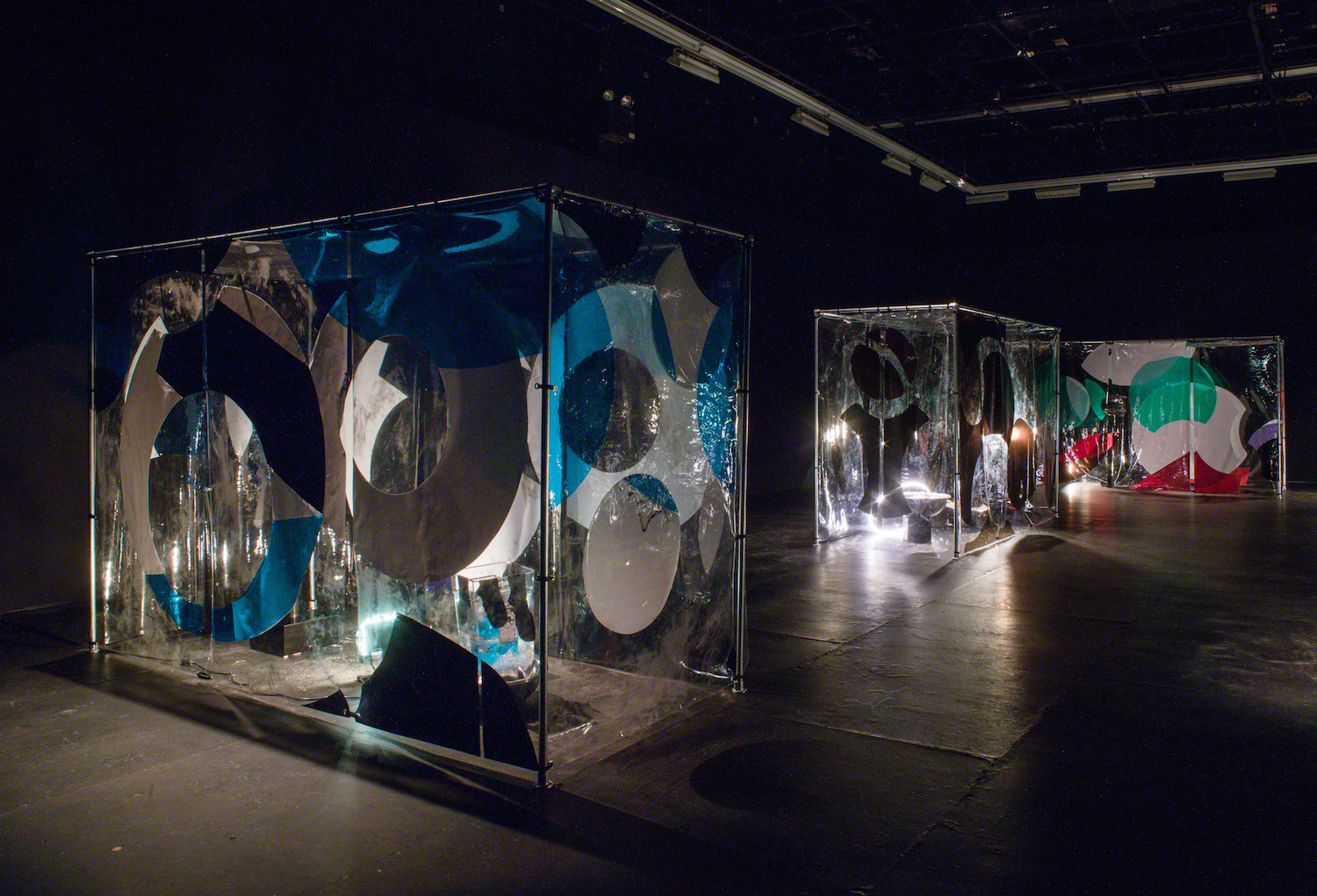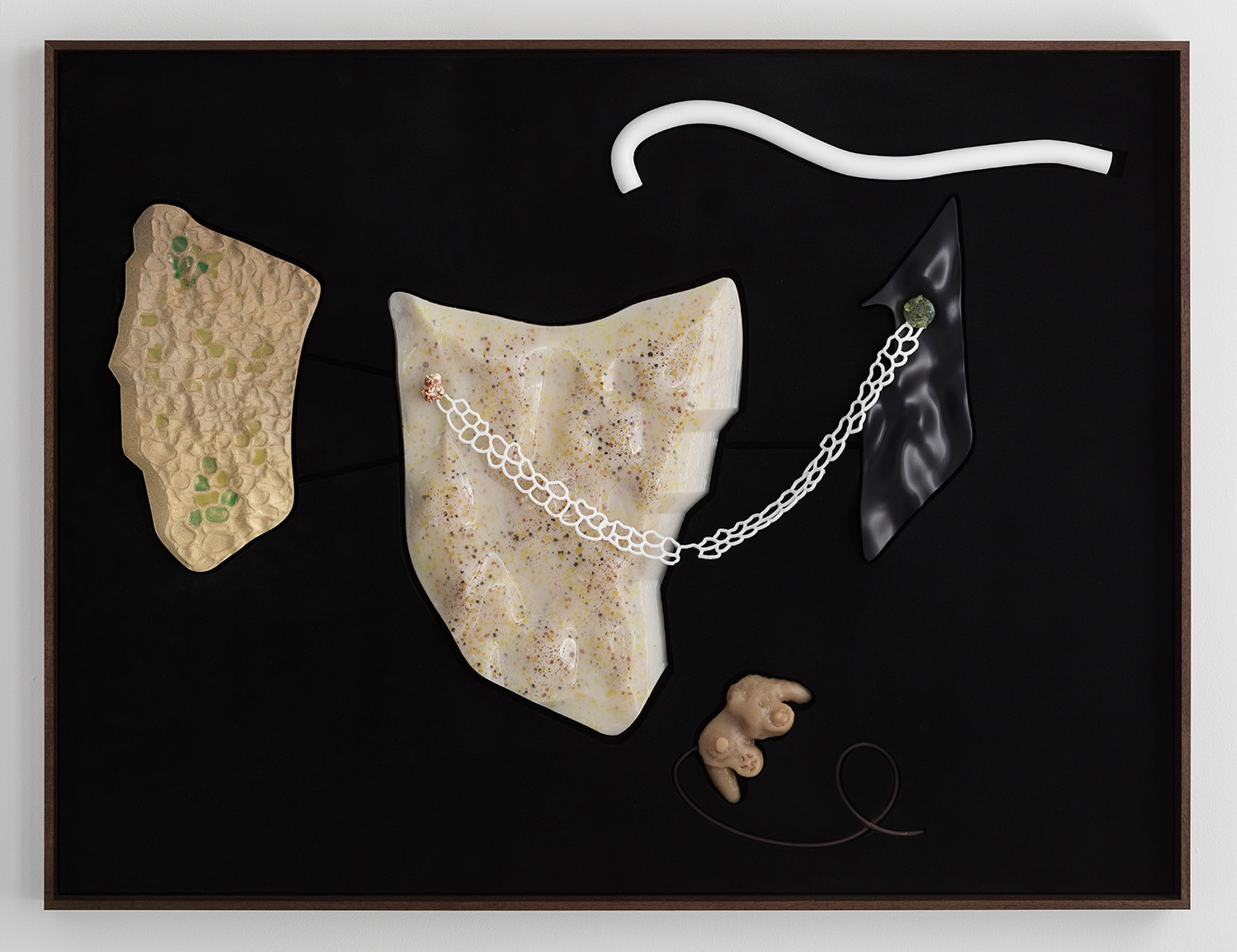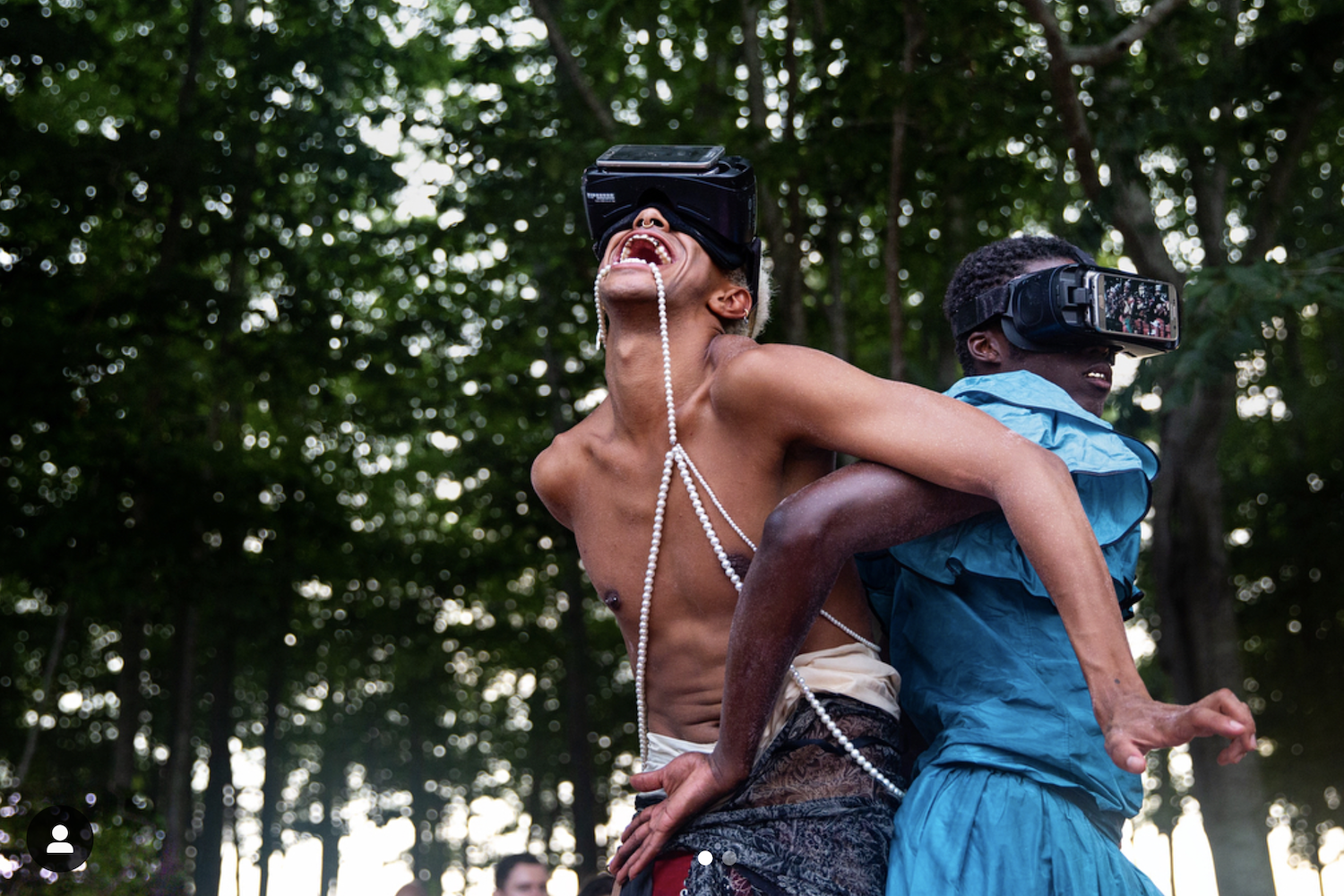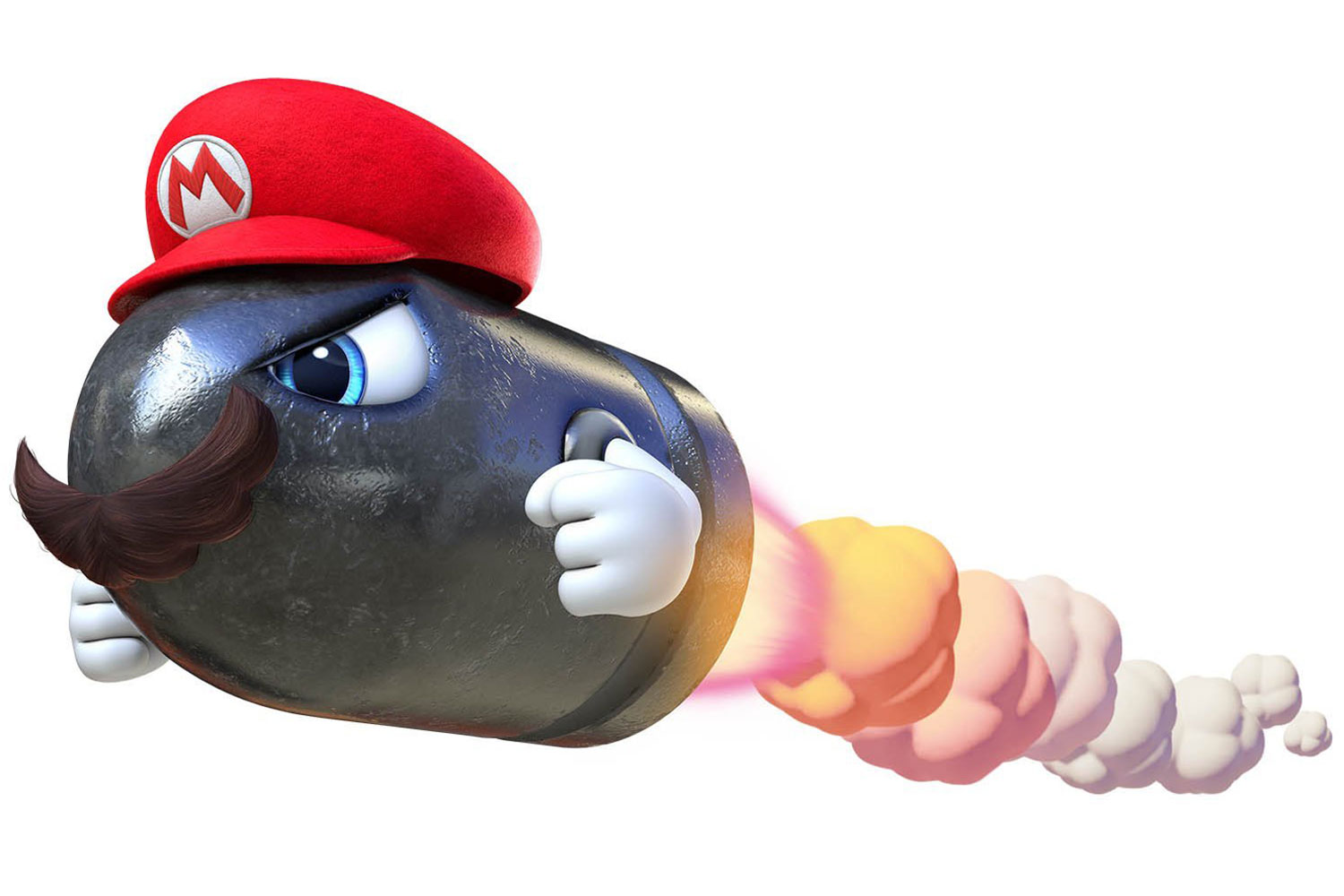Mental Escape is a series of live interviews exploring how the art world responds to today’s challenges. Livestreamed from Flash Art’s Instagram, Alexandre Stipanovich interviews artists, curators, gallerists, critics, and collectors about their hopes, fears, doubts, visions, and projects they are dreaming of pursuing once the dust settles. This series took place during the COVID-19 lockdown.
Welcome to the second episode with the artist Anicka Yi.
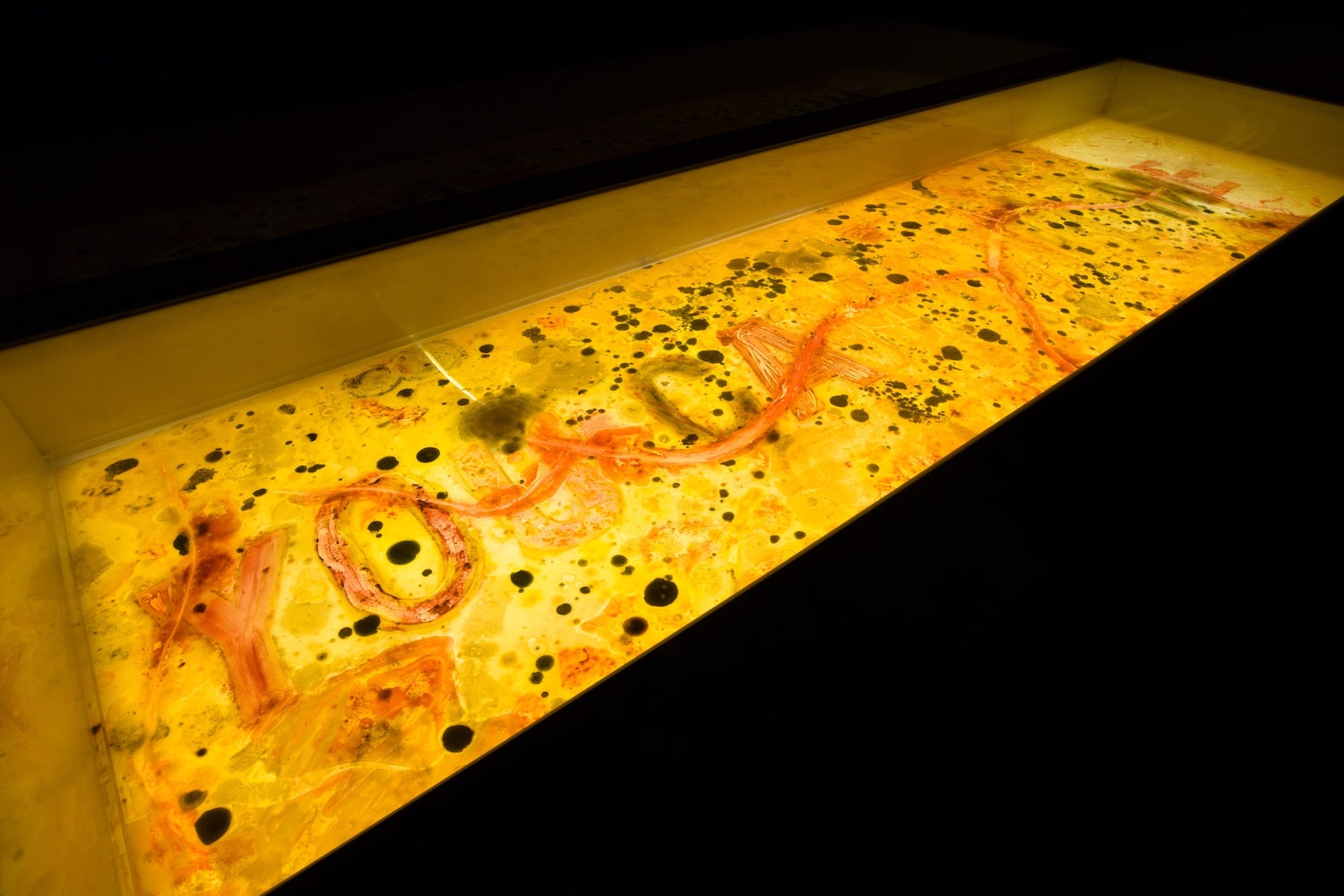
Alexandre Stipanovich: Anicka Yi has worked a lot with living microorganisms, ants, fragrances, different cuisine recipes. She’s going to tell us more about her work. Hi Anicka, thanks for joining this series. How are you?
Anicka Yi: Hi, thanks for having me. I am good. How are you?
AS: I’m good. I’m in Brooklyn, Park Slope, at home. Are you in your studio or apartment?
AY: Oh, cool. Well, now it’s being converted to my studio, but this is my apartment in Long Island City.
AS: I’m really happy to be able to ask you a few questions. Your work approach is very relevant, I mean, especially at the moment. You’ve been working on cleanliness and ideas of contagion, and bacteria, and trauma. I just wanted to start with a very broad question. How do you feel right now? How does that context influence your approach? Do you think there’s an irony to it, or do you feel your show at The Kitchen, for example, was a premonition?
AY: I don’t know about premonition. I’m adapting rapidly, like most people, but I would say that at this moment I’m just utterly captivated and fascinated by this virus. If you think about it, this virus, that most humans consider to be quite threatening, essentially it’s shutting down human civilization as we know it. That is so powerful, and I have to respect that. Would we listen to it in any other context, in any other form? I’ve been trying to educate myself, trying to learn as much as I can about viruses. One of the things that I’ve learned is it’s maybe considered the largest biological entity on the planet. How can we ignore that?
Furthermore, we are, as human beings, eight percent comprised of virus in our DNA. I mean, I could go on and on with scientific statistics, but I think that it really underscores what I’ve been trying to investigate in my practice for quite a while — this idea of this multispecies interdependence. The virus demonstrates that in so many acute ways. For instance, it doesn’t really distinguish humans from any other animal because it can just jump from animal to animal to animal and it doesn’t really matter or make the distinction that it shouldn’t enter into this host’s body. It’s traveling through cells and membranes, and it’s regulating carbon and nitrogen.
It is the oldest, predating life. Technically, viruses aren’t alive, but they’re part of a larger living system, part of a living engine. That, to me, is one of the most fascinating philosophical aspects of this condition right now. What we consider living and nonliving, those binaries, those distinctions, they’re just dissolving. They’re getting obliterated. What is a machine? Our questions have always been, “Well, is that machine alive? Is it not alive?” Now, with this virus, it doesn’t really matter. These distinctions, these old binaries that we created between artificial, synthetic, organic, inorganic — it’s all starting to dissolve those boundaries, those distinctions. I think that this is a very ripe moment to rethink who we are as humans, rethink our relationship with these entangled ecologies. I’m very stimulated and inspired by this.
AS: I mean, I imagine you must have projects in the making. How does that inform or influence what you’re working on right now? Or does it?
AY: No, it permeates everything, because ostensibly we’re all adapting in a new way that we haven’t really experienced before. It influences everything that I’m doing, whether it’s my dreams when I’m sleeping, or the way that I prepare my breakfast, or the way that I am connecting with people. First and foremost, from an interpersonal perspective, I have never felt more deeply connected to my personal network than I have at this moment, being isolated in my little capsule pod and yet having this rich, deep-tissue connection with everyone. In that sense, I guess I’m foregoing a little bit of sleep because of that, because we’re all doing the emotional, intellectual labor on overdrive. That’s been one of the most sublime parts of this — just feeling so connected to so many people and having authentic exchange. A lot of that, the superficial veneer, is all starting to wash away. That’s been something that I really embrace and really value.
In terms of my work, my studio, we’re still working robustly. We are busier than ever, maybe because we’ve become these first responders to an intellectual crisis or something. We really want to go out there and talk with people and be able to take this moment to exchange these ideas, but in terms of specific projects, I would say that through this adaptation, it’s almost like growing new organs, new limbs, new ways. The virus is teaching us how to adapt and not be limited to these boundaries. I’m really impressed with my studio and how well we’ve all been so absolutely biorhythmically in sync. In a way, I feel like we’re working better than we ever have in this condition of quarantine, everybody in their isolated chambers, as it were. Yeah, it’s been positive.
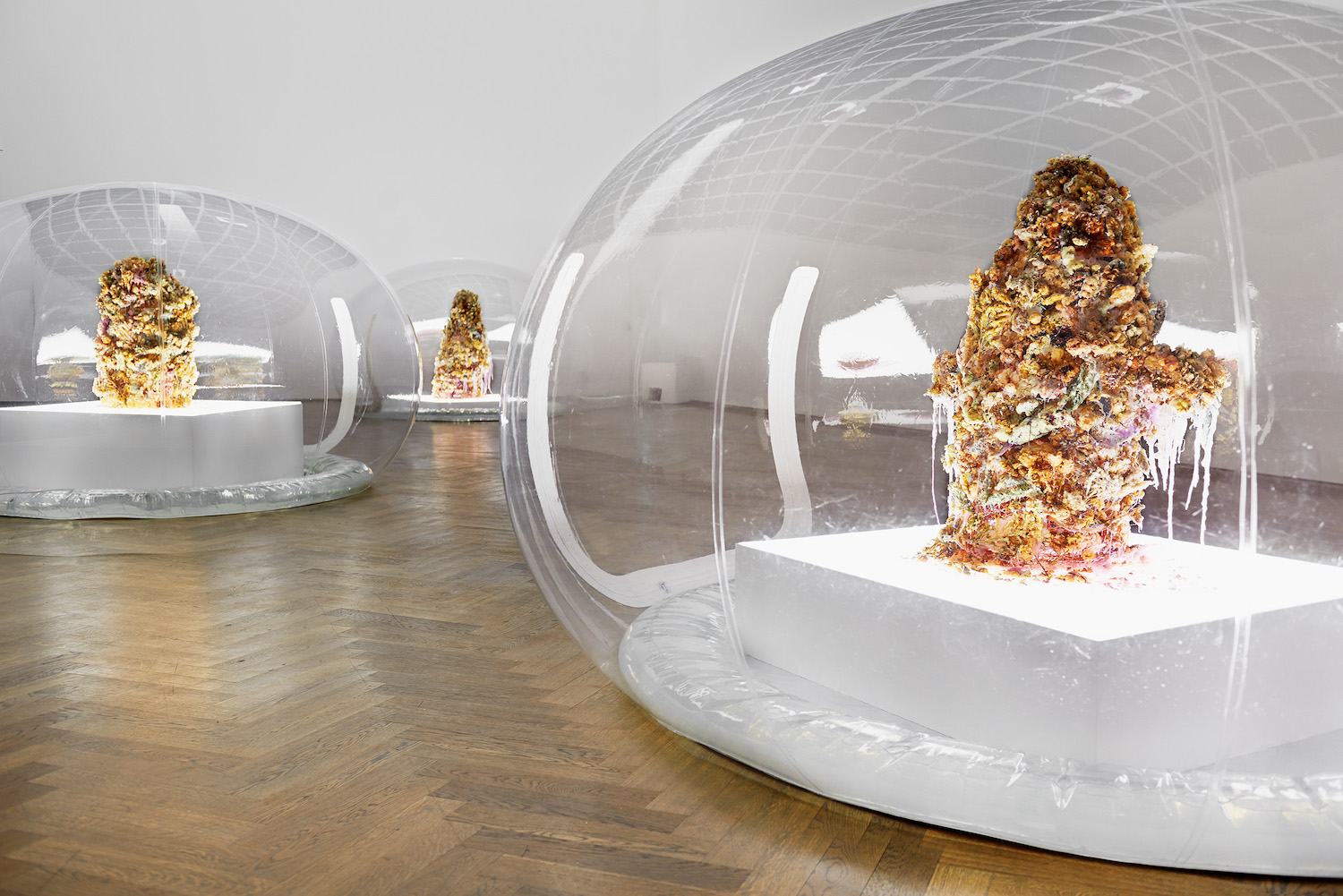
AS: Yeah. Life is what you make out of it, right? It’s how you respond and how you channel the anxiety into a new form of energy. But I was curious… we exchanged notes briefly and you mentioned new organs and a new definition of the human being. I would love to hear if you have any ideas for new organs? What do you think would be useful — or maybe totally useless? I don’t know. Maybe we grow organs that we don’t necessarily need. But in that case, what type of organ do you think we could use?
AY: Well, I meant that metaphorically and symbolically. In a way, I think we’re already doing that collectively: we are spotting new ways of giving each other support and reassurance, and also paving new ways of how to coexist. I think that that’s really, to me, part of the concept that I’d like to underscore is this coexistence, this interdependence, this overlapping and not having to have these kinds of discreet categories. A lot of the work that I’ve been doing over the last couple of years has been with this think tank called the Berggruen Institute. It’s run by Tobias Rees, who’s the director. We’ve been talking about the “Transformations of the Human.” That’s the program that we’ve largely been involved with. We have been asking these questions, because the definition that we still embrace and go by is a nineteenth-century definition of the human, which states that humans are separate from nature, that you have all other life forms — microbes, plants, and animals — over here, and humans are over there, and that humans are more than mere nature.
I think that that concept and that definition hasn’t served us well at all. It was a decent hack for a couple of hundred years, but it’s just not working. It’s not functioning properly, especially when we take into consideration machine intelligence, and especially what we’ve learned from microbiome research, synthetic biology. These tidy categories really destabilized what it means to be human. And we’re not separate, actually — we are deeply, deeply entangled. We need to rethink that. Perhaps, to your question, in terms of an organ, we could synthesize that together. We can do that transnaturally, because that distinction between synthetic and artificial is also maybe destabilized. If you think about tools like CRISPR, the gene-editing tool, CRISPR is largely made from microbes, bacteria. We’re using a bacteria-driven tool to artificially gene edit. It really complicates this category of natural versus synthetic.
AS: Yeah. In your work, you address also the fixation — is it a fixation or an obsession? — with cleanliness.
AY: I mean, that’s a facet of the work that I have explored in terms of my microbial work. I think that that ties in with what I’m trying to explore in terms of the biopolitics of the senses. What that means for me is, through our biological perception of reality, we try to apply these very un-biological stigmatized values onto the senses. For instance, when you have your sense of smell and olfaction, the way that we attribute it is that it’s feminine, because it is largely invisible. It is hard to understand. It’s inscrutable, mysterious. We often attribute it to the feminine, whereas vision and sight is attributed to the masculine because it represents discovery and knowledge.
I would say that I just reject those values that we’ve put onto the senses. We have to get past that. It is not serving us well to think this way, but it also ties into a larger idea of politics. How we try to scrub the natural world outside of politics is trying to create this distinction that politics is a wholly human endeavor. I don’t think that’s serving us either. We need to think about politics that embraces nature and rewrite that.
AS: Yeah, maybe femininity is an artificial construct that still has power over us. We started with your work on bacteria. I was curious to see if your studio has turned into a lab, because I’ve worked in a lab and I know that growing bacteria is a heavily… I mean, there’s a lot of protocol, especially for some strains that you don’t want to leak. There’s this side in which you work with living microorganisms, and then there’s another aspect of your work, which is scents and fragrance. Tell us about your studio. Is your studio a microbiology lab?
AY: Not quite, not yet, although we have a very tentacular practice and we have a broad network where we do work with microbiologists and synthetic biologists, and they have proper labs, and then we liaise with them and collaborate with them. We’ve learned an incredible amount, but then it just… I think that the studio at its core is a very shape-shifting entity. We adapt to what we need. As artists, we are lifelong learners. We have to learn about the things that we’re interested in, and so we spend a tremendous amount of time researching these subjects and ideas. We have learned a lot about the microbiome, but we haven’t yet converted the studio into a laboratory. But hopefully maybe one day the compound will happen somewhere and we can expand our facilities.
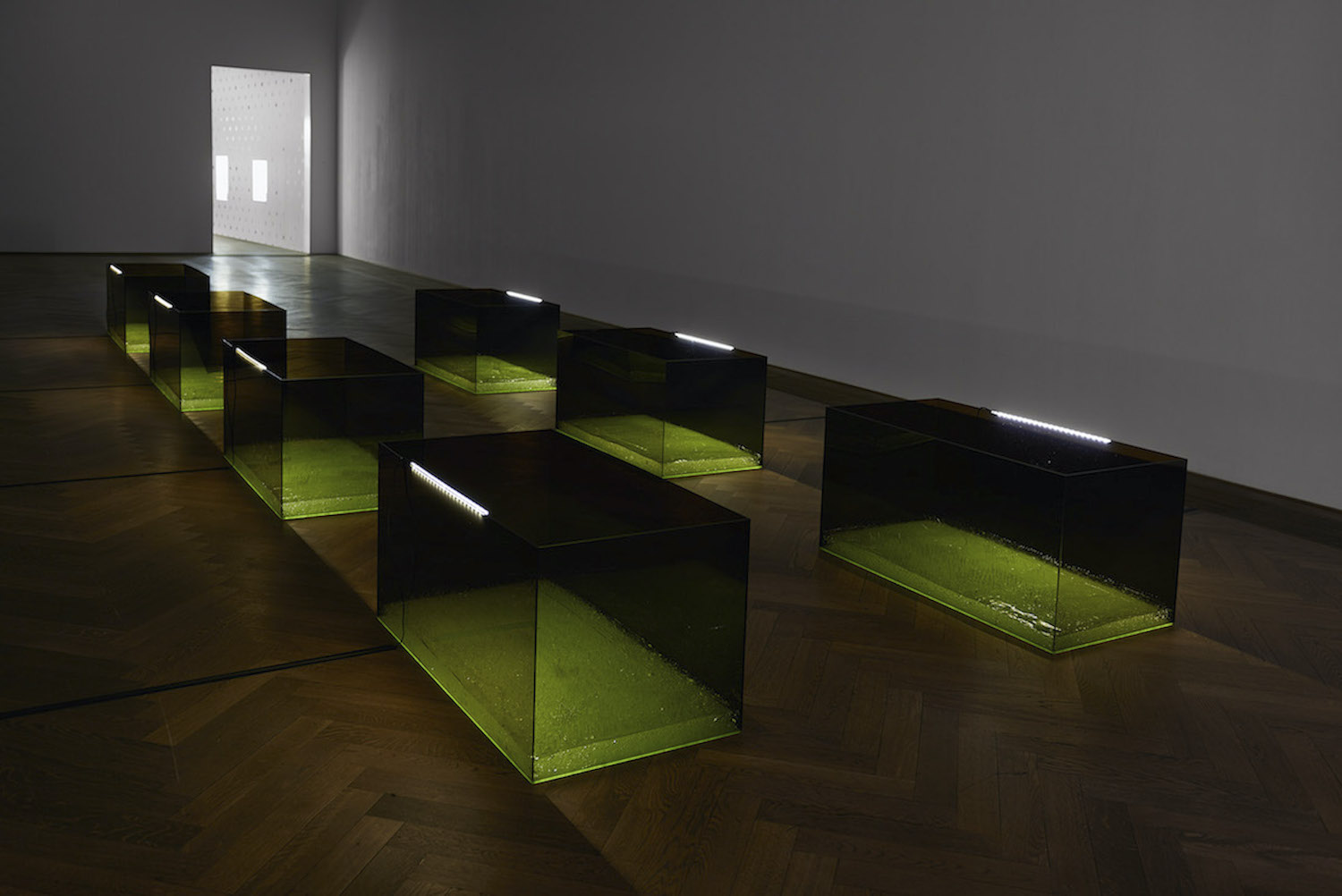
AS: Your interest in scents started from a very young age. Today you design, let’s say, “abstract scents.” Could we call them that?
AY: Yes. I’ve been very immersed in the olfactive world for a while now. I think that the body teaches us a lot of things through smell. We learn a lot about our environment and our surroundings through smell. I believe that that is a very strong communication tool. When I started making artwork with smell, it was really a way to reorient a point of entry into the experience of art, because the canon would tell us that our point of entry into art was an ocular entrance, that you are meant to look at art, and all the other senses were subordinate to vision. I didn’t really quite understand why. Not having permission to do one thing or the other, I wanted to enter art through the sense of smell, through the haptic, through other senses.
I think olfaction is so important with art because it really brings into focus air. I think air is a very charged concept currently in our COVID-19 climate. Everyone is very conscious of the air between another person and other biological entities. What we’ve learned is those living in poor-air-quality cities, polluted cities, are more susceptible to get sick with COVID-19. But in terms of olfaction and art, air becomes a very important medium and site for political and social discourse, because it is this trans-corporeal exchange that you’re entering into in the space with the artwork. It has to come into your nose, your pores, your gut sensors, the smell sensors in your gut. You are metabolizing the work prior to this cognition of what it is that you’re smelling, because we experience smell through the limbic system. It’s precognitive. Before we understand what something is, we experience it on a different level. I find that area to be quite exciting and fascinating with a lot of potential.
AS: Yes. Comparing vision and smell is fascinating, although it’s apples and oranges in a way. Maybe vision is about having the big picture and smell is more about getting a hint. I find it difficult to form a sensation only based on smell. I think vision needs to precede smell in order for smell to be welcomed in. In that sense, maybe I would say — and you will disagree I’m pretty sure — that smell comes second in a way, as it needs to be authorized or validated by vision. Otherwise you can feel invaded by it. What do you think?
AY: Well, it sounds a little bit like conditioned thinking — that you have privileged vision probably over a large part of your life, and you have prioritized and ordered your senses in terms of which ones you value and in terms of how you experience your consciousness. In that sense, it’s not uncommon. I would say that a lot of people probably share your thinking, but I don’t think that there’s a compartmentalizing that we can really do. Certainly we are conditioned, and certainly there are lots of people who are completely unaware of the aromas and the smells in a room and in an environment. They may think that that’s less important because it’s been conditioned over the last couple of hundred years, where we devalue our sense of smell because we’re not actively using it as much for biological survival. Whereas when we were more on all fours, on the ground, closer to the ground, we were much more in touch with smell.
I understand what you’re saying as an evolutionary rearrangement of our senses because we don’t need — or we think we don’t need — our sense of smell as much for survival. But I think that for me, I would say it’s the opposite, or the inverse of what you just stated — that I smell things before I can actually see something. If I’m walking into a vast stadium or something, I’m going to smell and take in the data, the rich olfactive data in this space, before I can articulate and identify what I’m seeing in this space. Because I think that there’s a certain immediacy for me — being in touch with what I’m smelling and the information that I’m receiving from this smell before I can identify something visually.
AS: Yes. No, I totally agree. By secondary, I meant associative. I think our vision doesn’t need to be associative. I think it’s hard for us to remember or imprint a smell without an association, whether it’s a vision or whether it’s a touch or whether it’s a sentiment. But I mean, I think smell is totally a primary sense, a fantastic sense, very emotional, very rich, very deep and very strong. I think it always relates to a… it’s more of a conveyor than a thing in itself maybe. It conveys to a memory or it conveys to an image or it relates and associates with something — but maybe I’m just getting a little bit vague and abstract.
AY: Well, I mean, I don’t want to get too granular on this point, because we don’t have a ton of time, but I think that there is a case to be made for a precognitive relationship to smell, and also pre-language. We have our memories and associations when we develop beyond childhood, and that is something that can be hopefully or maybe rerouted, where it doesn’t have to be all based on our experiences through smell. That in itself, that relationship, is fascinating, but what if smell was something much more objective? What if it had its own vocabulary, its own language, for itself, by itself, rather than this associative meaning — rather than something that is representational and something more direct? Brilliant scent artist Sissel Tolaas is working on a vocabulary for such a thing. I think that that’s really important and powerful.
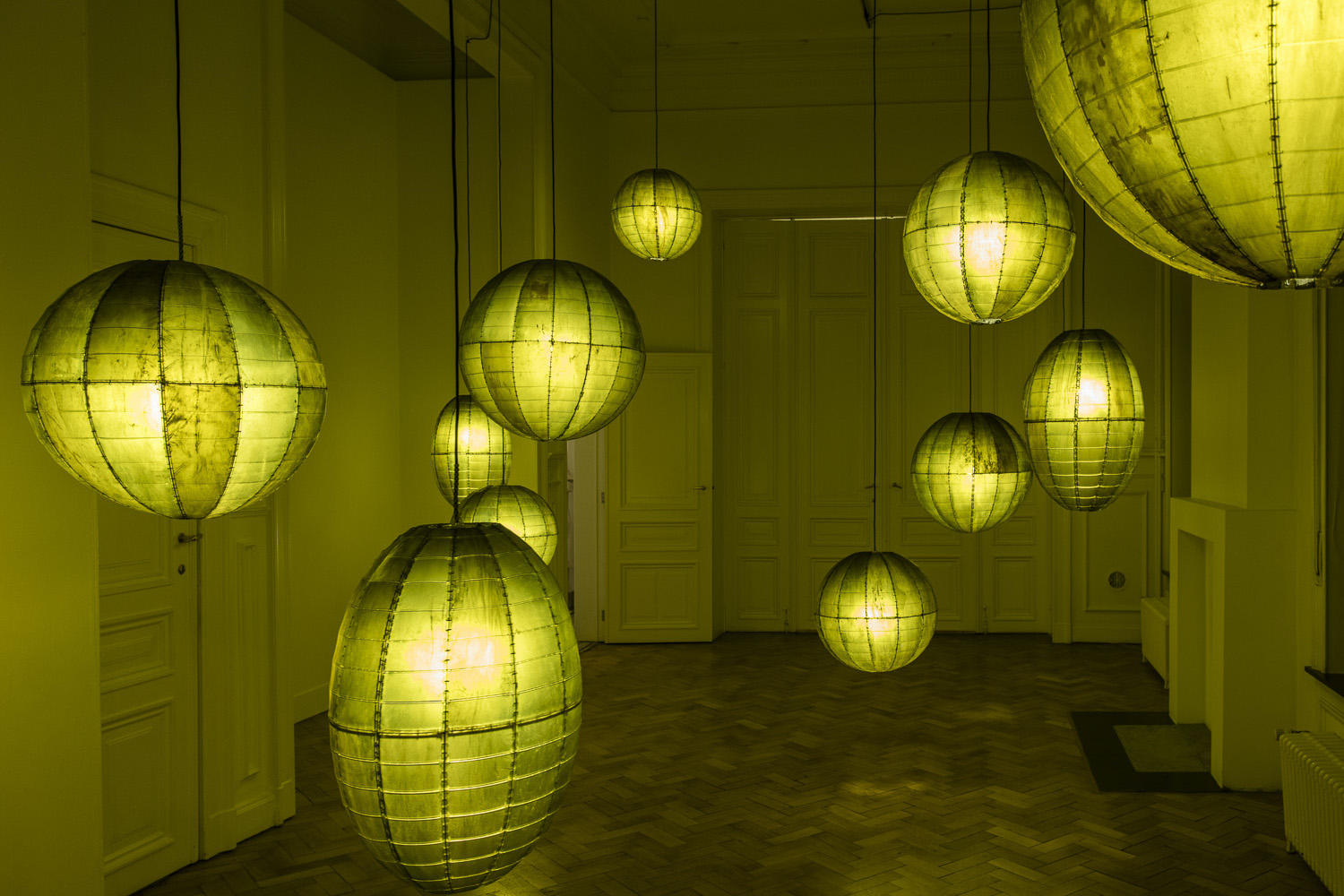
AS: What are some of the fragrances you’ve imagined in your work?
AY: Well, I’ve worked with a brilliant perfumer, French perfumer Barnabé Fillion. We worked together to create a smell about forgetting. On the occasion of an exhibition that I did at the Kunsthalle Basel in 2015, we created a burning book. What that means is that the entire book was impregnated with this smell of forgetting. It was printed on that Papier d’Arménie, the burning incense paper, so that you could just tear off strips of the book — a take on “burn after reading” — and then you could read a page about the work and then you could burn the scent. The scent was inspired by forgetting, because it was a conceptual survey show in 2015. Looking back at the last seven years of my practice, I was feeling very squeamish about that. I thought about how I could subvert that experience, or try to work with my discomfort of looking back at my practice. The best way that I knew how to approach that at the time was to create something about forgetting while looking back at the practice.
We’d researched Alzheimer’s patients. It turns out a lot of Alzheimer’s patients lose their sense of smell when they get sick, and therefore become very increasingly depressed. Also, I would like to add that a lot of COVID-19 patients also lose their sense of smell when they get sick. How do you trigger a smell about forgetting, especially when all we know about smell is so tied into memory, so much tied into the experiences of a certain tableau or vignette that you experienced the smell through? I wanted to reroute it in a different way and make a scent about forgetting.
AS: I had a question for you about a museum of smell. If you could tell the history of mankind in five smells, what would they be? Five scented rooms. What would they be?
AY: Wait. You’re asking me to create a list about humanity based on five scents? Okay. That’s a fun game, actually. Five scented rooms? Okay. Right now, currently, I’m thinking about the smell of plasma. I’m thinking about the smell of antibodies. I’m thinking about the smell of a very pungent scalp. I’m thinking about pores, the smell of pores. I’m thinking about the smell of internal, corporeal smells, like the smell of blood, the smell of plasma, the smell of organs, the smell… I guess that, and then maybe the smell of loss and letting go.
AS: It’s more than five, but that’s great. Tell me, how do you manage to be in good spirits? What kinds of books do you read, or what artworks do you go back to? Or movies or music? What keeps your spirits up?
AY: Well, certainly, I finished this incredible book by Cathy Park Hong called Minor Feelings. It’s about a reckoning of the Asian American experience. That’s been very important and poignant and grounding to read at a time where there’s been a lot of anti–Asian American xenophobia, racism. That’s been an incredible anchor point for me. But if I had to confess, I just recently, in this quarantine period, joined TikTok. My studio is probably thoroughly embarrassed that I’m bringing this up right now because I keep rhapsodizing about TikTok and how it’s this crystallized pixel of human activity just dispersed into trillions and trillions of pixels. I love it because it’s this creative tool and I keep threatening to move the studio onto TikTok. I’m just going to create things. It’s remarkable, the amount of creativity and the joy. I joined because I want to become a part of this critical mass and not stand out and just join the trends, the dances and all of that. That’s given me, surprisingly, immeasurable joy. Yeah. I’m sorry. That was a horrible plug for TikTok. I don’t know why.
AS: I’m going to log into TikTok after this and see. What about the future? Do you think this crisis now is going to impact — in the long term I’m talking, in five years or ten years from now — the museum experience or the gallery experience or the art performance? Do you think it’ll go back to normal, or do you think there’ll be some long-lasting changes?
AY: It’s really hard to predict. I can tell you what my hope would be — that we absolutely adapt to this moment and try not to go back to business as usual. Because as I stated before, those models are just not available anymore. We can’t undo what we are already, even biologically, metabolizing in this moment. Even having very subtle conversations with people, and how they’re noticing the changes, and, for instance, the lack of rampant consumption. I’ve really appreciated not consuming anything more than I absolutely need right now. I feel incredibly, just, light from that and buoyant. I wonder if there is a way to memorialize that, and we create a Corona holiday, an annual holiday where we volunteer to go into quarantine and we don’t consume for a week.
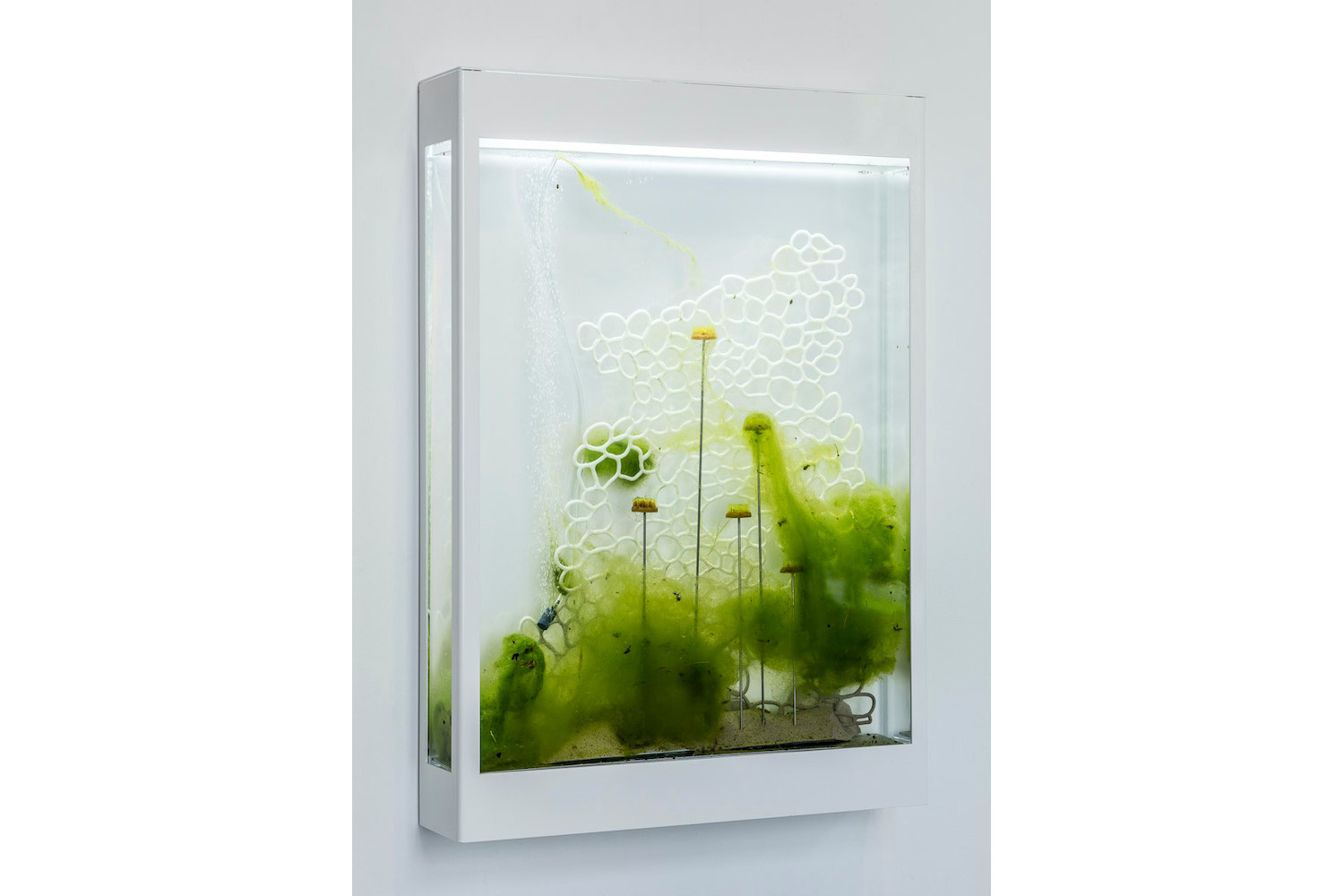
AS: Yeah, I thought about that. I thought maybe we could have that month of quarantine every decade. Every year it’s too much, so I thought maybe every ten years.
AY: A resetting? Okay. Oh, you think a year is too much? No, I think it’s annual. I mean, we spend… what are some of those rampant consumer holidays that we have, like Valentine’s Day and Christmas? I mean, that goes on for an entire month every year. I think we can afford a week for a Corona holiday annually, don’t you think? That’s not being too greedy, is it?
AS: I mean, I feel depressed and anxious, of course, about what’s happening, but I also feel privileged to be reading and researching and taking the time with a very slow approach. I mean, who knows? If we didn’t have this crisis, maybe we would have been on that treadmill until we die. That really forces us to see the slower pace. I think maybe that’s one positive aspect of this.
AY: It’s my hope that we do not revert back into our human exceptionalist ways and that we think through our hubris that we’re going to eradicate this — that it’s all about control. Because as I stated earlier, this virus has us stopping dead in our tracks. You have to respect that. You cannot think in these kinds of human-centric ways: “Oh no, we need to protect ourselves and we have to go even further in this militant way against this virus.” We have to work with it. It’s not going to help us to continue to think in these human-centric ways. I guess, if I had one plea from this conversation, it’s for people to rethink that and be open to a reset for our species, and that everything can change and we could coexist rather than try to isolate ourselves as separate agents on the planet, and work with all the other biological entities — and machines, quite frankly.
AS: Do you have an exhibition planned soon or that got postponed?
AY: Yes, at Turbine Hall, Tate Modern. We haven’t officially postponed it. We are still scheduled to open October 2020, this year. We’ve got a few more projects coming up after that, but the big one that I hope that everyone tunes into is the Turbine Hall project, which, I hope it works out.
AS: I hope too. Well, thank you so much, Anicka, for tuning in. Best of luck with everything.
AY: Yes, thanks for having me. Take care. All the best.

